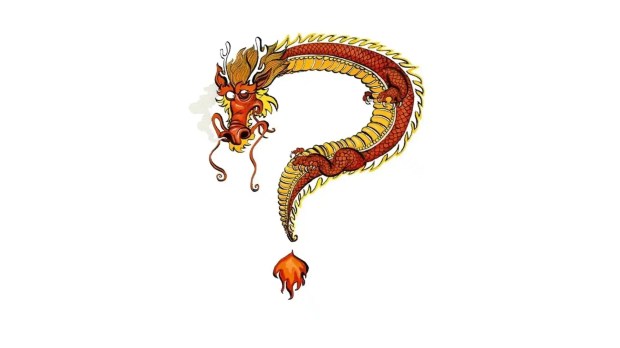The Spectator has a long and proud history of fact-based optimism, sometimes represented by an end-of-the-year article explaining that statistics bear out that this was the best year ever, even if you didn’t get that impression when following the news.
Well, 2020 is not a good candidate for such an article. ‘The worst year ever’, according to a Time Magazine cover story. We all share that sentiment to some extent. We will remember 2020 as a year of disease and death, and lockdowns that separated friends and relatives, and businesses from customers, causing depressions of both the economic and clinical sort.
But if we were to take it literally – the worst year ever– it’s the kind of statement that can only be explained by a spectacularly short memory. Just since the early 20th century (and mind you, ‘ever’ is even longer than that) we have experienced two world wars, the Great Depression, the Holocaust, the Gulag and Mao’s Great Leap.
Even if we limit ourselves to pandemics, the Asian flu of 1957-58 and the Hong Kong flu of 1968 killed a comparable number of people when the world population was much smaller. Had Covid-19 been as deadly as the Spanish flu, just a century ago, we would not have been looking at 1.7 million deaths worldwide now, but somewhere between 200 and 400 million. And most of those victims would have been between the ages of 15 and 35.
Of course, none of that is a comfort when we face a new lethal virus, and aversion behaviour and unprecedented lockdowns that ground flights, wreck businesses and throw millions into unemployment.
How much has been destroyed, and how much has been saved through human ingenuity and entrepreneurial flexibility under the most difficult circumstances imaginable? Is it fair to even talk about 2020 as one of the worst years in recent memory?
The data is not yet in, but we can use projections and scenarios to come up with a tentative answer. The global economy probably crashed by something like 4.2 per cent in 2020, so GDP per capita in real terms ends up slightly lower than in 2017, but higher than in 2016. To get to the highest GDP per capita mankind has ever attained we will now have to wait until 2022.
Naturally, a recession like that has a devastating effect on people’s livelihoods. According to the baseline scenario of the World Bank, around 88 million people were thrown back into extreme poverty because of the pandemic. If this is the case, the global poverty rate is now 9.1 per cent. That’s bad, but actually, it only takes us back to the poverty rate of 2017 – which was half of what it was a decade earlier, and just a third of what it was around the turn of the millennium. If global growth picks up, we should be back to the lowest poverty rate in history at least in 2023.
As people lose jobs and income, many go hungry. Projections from the Food and Agricultural Organization point to an increase in the global number of chronically undernourished from 8.9 to around 9.9 per cent. A terrible outcome, but it still represents a reduction by a quarter since 2000.
Luckily, the new coronavirus only rarely affects children. However, the indirect effects of household income loss, strained health care and less vaccination coverage against common diseases will take a severe toll on the young as well.
According to an estimate published in the Lancetearlier this year, the pandemic could result in an additional 447,200 under-5 deaths over six months. This is based on a scenario of major disruptions to the health care systems, and since the picture has since brightened a bit in low and middle income countries, this is almost certainly an overestimate.
But even if this scenario would prove to be right, only three years have seen lower child mortality than this year – the past three years. Even if the Lancet projection turned out to be correct, 2020 as a whole still saw 1.3 million fewer child deaths than 2010 and seven million fewer than 1990, despite the increased world population.
Politics definitely deteriorated in 2020, since authoritarians never waste a good crisis, but most of them are in a weaker position than is often assumed, since it is easier to promise than to deliver and hence easier to take than to stay in power. Dictators will hopefully face a more difficult 2021 as the vaccine helps us turn the corner and people demand that societies open up again.
Our rapid scientific and technological response to Covid-19 is the most important reason to believe in the future. Optimism is not a belief that problems and disasters don’t happen (I concluded the health chapter of my 2016 Progress book with the warning that at some point a virus ‘will likely mutate into a form that is sufficiently deadly to take a terrible toll on humanity’). Instead, optimism is the belief that the growth of knowledge and technological ability gives us increasingly impressive tools to deal with the problems and disasters that we are bound to face.
We have seen proof of that in 2020. It took mankind 3,000 years to develop a vaccine against polio and smallpox. Moderna designed a vaccine against Covid-19 in two days.
Had we faced this new coronavirus in 2005, we would not have had the technology to even imagine such mRNA vaccines, if it had appeared in 1975 we would not have the ability to read the genome of the virus, if it came in 1950, we would not have had a single ventilator on the planet. And if we had suffered from this pandemic before the internet, our economy would have collapsed completely, as would our social relationships.
2020 might not be the best year ever, but it is certainly, as Tony Morley puts it, ‘the best year to survive the plague’.
In summary, this disease would have been worse in any other era, and the progress of the last few decades has been so fast, and human creativity under duress so impressive, that even major setbacks only pushes us back a few years. Only three years in history have been better in terms of GDP per capita, extreme poverty and child mortality – 2017, 2018 and 2019.
Despite a pandemic and a global lockdown, the share in chronic hunger right now is a quarter less than it was in 2000, child mortality has declined by 40 per cent and extreme poverty by two thirds.
Far from being the worst year ever, 2020 was the fourth best year in history.
Got something to add? Join the discussion and comment below.
Get 10 issues for just $10
Subscribe to The Spectator Australia today for the next 10 magazine issues, plus full online access, for just $10.




















Comments
Don't miss out
Join the conversation with other Spectator Australia readers. Subscribe to leave a comment.
SUBSCRIBEAlready a subscriber? Log in